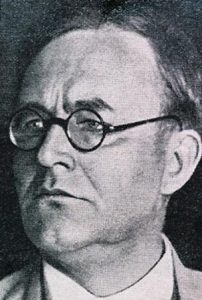During the First world War
 The battle of the Somme, 1st july to 18 november 1916 © Wikimedia Commons
The battle of the Somme, 1st july to 18 november 1916 © Wikimedia Commons
1917: The 4th centenary of the date when Luther nailed his theses on the chapel door in Wittenberg was celebrated in the fourth year of the First World War. Luther was seen as a true German – his trust in God and unswerving determination to succeed in conflict were seen as an example for his fellow countrymen.
The Nazi regime
 Professor Karl Barth © S.H.P.F.
Professor Karl Barth © S.H.P.F.
 Martin Niemöller (1892-1984) © Wikimedia Commons
Martin Niemöller (1892-1984) © Wikimedia Commons
1933: Luther’s 450th anniversary was celebrated in Germany. Although some pastors disagreed violently, the Deutsche Christen (German Christians) distorted his message to make it conform to the German Fuhrer’s slogan: Mit Luther, für Glaube und Rasse (with Luther and Hitler, for religion and race). However the Confessing Church in opposition to Hitler also took Luther as a model and forerunner of independentProtestant Churches in Germany.
The Luther year of 1983
The success of the Luther Year in 1983, for his 500th anniversary, was not only due to the large number of commemorations but also to the political situation in Germany at the time: it was divided between the RFA and the RDA in the twilight years of the communist regime which held sway in Eastern Europe. The historians of East Germany saw in Luther their own precursor of a modern revolution. This view contributed indirectly to the reunification of Germany as Luther was part of their common heritage.
Author: D'après Marianne Carbonnier-Burkard